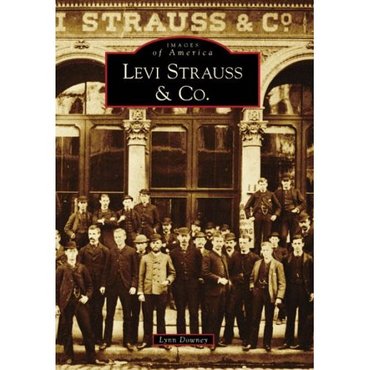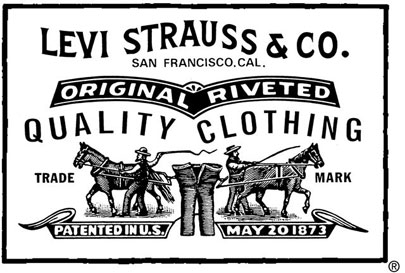The globally recognized brands Levi’s and Docker’s, as well as less popular Signature, appeared on the world marketing stage thanks to Levi Strauss, who was born on February 16, 1829 in Buttenheim, Bavaria. In 1847 he, his mother and two sisters move to America.
In 1853, he is admitted to American citizenship, and shortly afterwards he sails to San Francisco and founds a small dry-goods house there, selling blankets, handkerchiefs, clothing, etc. to miners during the California gold rush. His store expands and becomes a chain throughout the American West. For almost 20 years he doesn’t even think about changing his successful business for something else, but the fate has other plans.
In 1872, Levi Strauss receives a letter from Jacob Davis, a tailor from Reno, Nevada, who tells him about his new invention — rivets the pocket corners. He spends a lot of time sewing the torn off side pockets back, and so makes it up to reinforce them with metal rivets. The tailor, who from time to time purchases bolts of cloth from Levi Strauss & Co, now needs money to patent the invention and become exclusive manufacturers of rivets, and Strauss provides it. On May 20, 1872 the patent number 139,121 passed into their ownership and remains there until 1890, when it goes into the public domain.
The founder of the company passes away in 1902. He was never married and had no children, so his nephews become the ones who inherit 6 million and his take over reigns of his company.
In the following 4 years the company, which made the first blue jeans in history, barely survives in the earthquake and fire in 1906, which ruined the headquarters and two factories of Levi Strauss & Co. The papers and all business materials perish in the fire, so, the company begins its life almost from a scratch. Still, it manages to get over from the tragedy and extends the business by engaging more wholesale customers and creating new jobs for employees in newly-opened showrooms. Two decades and two years after the disaster, in 1928, the company registers the word Levi’s® as a trademark.
Despite the Depression of the 1930s Levi Strauss & Co. keeps the employees on payroll and provides them with building work at the facilities. In 1934 LS&CO created «Lady Levi’s®,» the company’s first blue jeans for women, and twenty years after it enters the sportswear market with its «Lighter Blues» casual slacks and «Denim Family» lines.
The jeans of the company undergo changes during the WWII. Following the US government demand for saving the materials in the hard times, the Levi Strauss & Co. has to remove all extra decorations like watch pockets and crotch rivets and introduced a simpler design.
LS&CO has been committed to providing social support to local communities, employees and minorities. In 1952 the company launches the Levi Strauss Foundation to improve its charitable activity and achieve bigger goals. In 1986, the company sells decorated denim jackets at the auction, and gives the revenues to AIDS research programs. Six years later it starts to provide medical care to unmarried partners of its staff, and it shows its loyalty towards gay people and in 2003 the company starts to hire transgender employees.
In 1986 LS&CO founds another brand, Dockers Khakis, the fastest growing apparel line in history, and launches it throughout the US, and in 2003 it presents its Signature jeans for value-conscious consumers.
• The first nationally distributed product of the company was «Koveralls,» a one-piece play suit for children, designed by Simon Davis, son of Jacob Davis in 1912.
• The cowboy as the key icon becomes widely used in the 30s.
• In 1960, the conventional word “waist-overalls” is changed for “jeans” in LS&CO advertising and on labels. The term replacement is caused by updates in the youth language. The teenagers start using the new word and it becomes generally adopted (the word “jeans” comes from Gênes, the French for Genoa, where canvas similar to denim was made).
• LS&CO first used TV as an advertising platform in 1966, when their debut commercial was aired.



